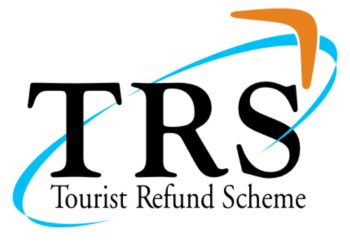Your passport is probably the strongest form of photo identity you can have, even in your own country. But given world realities, how far they let you travel depends on international relations, which decide whether you’ll be given entry i.e. a visa, or not. A group called Passport Index keeps tabs on different passports and their usefulness to the holders.
This handy website ranks the passports from Powerful (most countries you can visit visa free) to Weak ( the least number of places you can go without a visa). In 2017, Germany and Singapore shared the top spot, with 159 countries each can visit visa free. With only 24 countries they can visit, holders of Afghanistan passports are at the bottom of the list. The rankings do change, with United Arab Emirates (176 countries) taking top spot and Afghanistan still at the bottom of the list, though it’s now accepted in 36 countries. Twenty-six counties now have their passports accepted in 170 countries or more.
Where will my passport let me travel?
A passport is an official document issued by a government. It certifies the holder’s identity and citizenship and entitles them to travel under its protection to and from foreign countries. The countries a passport holder can travel to will depend on the relationship their country has with other countries and the agreements they have made regarding travel rights for their citizens.
Visa or no visa?
There are many classes and types of visas and the terminology can be confusing. Most importantly, check with the local representative of the country you are visiting for your specific needs. This may be an Embassy, Consul or even an authorised Visa issuing agent (Vietnam is one such country that uses agents). Make sure that the agent is really authorised and be aware that there is usually an additional fee for the service. Find out quickly if you need a visa when you travel to or within Asia or around Europe/UK. For worldwide checks, you can compare countries HERE.
Common Visa types – Some of the terms used can be confusing and mean different things in different places. This is a general guide to what a few of these mean:
Visa-free entry
Visa free entry means that you can enter the country without a visa for a specified period of time. This is thanks to agreements between your country and the country you’re visiting, to give you ‘landing permission’.
Visa on arrival
A Visa on arrival is picked up at the airport when you arrive. There is usually a cost involved and you must apply for a visa approval letter.
This type of visa has two different meanings depending on the country, so check before you go.
- In some countries it means you get there, apply, and pay for a visa
- In some countries it means that you need to apply beforehand online or via the embassy, get a confirmation of some sort, and your visa will be waiting for you at the airport when you arrive.
Be also aware that some countries do not have visa on arrival at all border checkpoints. In particular if you arrive by land or sea double-check to make sure visa on arrival is in fact available at the specific checkpoint you plan to enter.
e-Visa
An eVisa is an official document issued online by the Visa issuing Authority that allows a foreigner to enter and travel. This is usually available for online application. The visa will be completed online and sent electronically to a processing office. You may be required to print out a receipt, or everything is just done electronically.
Dual Citizenship
Many countries do allow dual citizenship, which may be an advantage allowing easy residency in multiple countries and access to government programs. However, if you hold a passport of a country that does not allow it, think carefully before accepting citizenship of a country that does. The implications are different for different countries and it would be impossible to list all here. If this your situation, check the rules carefully before making that decision.
Rights and Responsibilities of the holder in country of passport
There are a few basic rules for dual citizens, regardless of the points noted above:
- You must leave and enter the country of your passport with that passport.
- You are subject to the laws and rules covering citizens of that country while you are there.
- You may generally not seek protection of another country of citizenship while you are in the country of one of your passports. There may be situations where this will be different.
- You may have tax responsibilities in both countries depending on agreements between them.
- There may be a need to fulfill residency requirements between two homelands.
This information from the US identifies some of the legal considerations that can make life more complicated.
What information does your passport contain?
Passports are becoming more sophisticated in the way they store and present your bio-data. Most countries are moving towards use of biometric passports (also called ePassport or digital passport). You can recognise them because they have a chip symbol printed on the front. The secure chip embedded inside contains an image of the holder’s face, designed to increase security and make forgery more difficult.
The bio-date page contains your biographical data – name, date of birth, passport number and expiry date. Most passports also include your photo on this page and a machine readable strip at the bottom.
Your passport is an identity document. It doesn’t contain any criminal history etc.
Keep your passport safe
Some of the tried and true methods used to keep your travel documents safe include:
- A travel waist belt or travel wallet around the neck to carry money, credit cards and your passport. *** If you need to access any of these items, do’t do so where you can be observed.
- Always be aware of your surroundings and be extra aware of pickpockets.
- Take special care in crowded situations, such as the metro, public transport or open air markets.
- If you don’t need the originals, carry a copy and lock important travel documents in the hotel room safe or in your own suitcase.
- Use a cross body bag for items you need to access at border controls or banks.
- For items you don’t need often, consider searching out underwear pouches for cash, cards and documents you need to carry but not access.
- Keep documents in a ziplock bag in case of spillages. It also makes them easier to find in your bag.
- Always lock your bags, including hand carry bags on aircraft, buses or trains.
- If travelling alone, take handbags with you when you visit the toilet.
What if you lose your documents?
- Save copies of all documents in both physical and cloud versions. (For credit cards etc, do the backs as well). We like our handy CamScanner app to make quick copies of documents to save and share.
- Keep the Embassy or High Commission / Consul phone number separately from your passport. Contact them immediately if you have lost your documents.
- Write your email in the address spot in your passport. A finder will be able to contact you more quickly than making a long distance call to a third party named there. Check your SPAM mail if you have lost your passport in case a helpful email has been sent there.
- Be aware that your visa conditions may be affected by the loss of your passport.
A bit of history: fun facts
Wikipedia tells us that “King Henry V of England is credited with having invented what some consider the first true passport, as a means of helping his subjects prove who they were in foreign lands. The earliest reference to these documents is found in a 1414 Act of Parliament.” The word Passport comes from the French words ‘passer’ (to pass) and ‘port’ (seaport) and has been in use since at least the late 1400s.
However, evidence shows that some form of proof of identity has been used far earlier than this, at least to the days of the Silk Road and other even earlier trading routes. Usually this identity document has been issued by the ruler or government of the day.







This Post Has 0 Comments